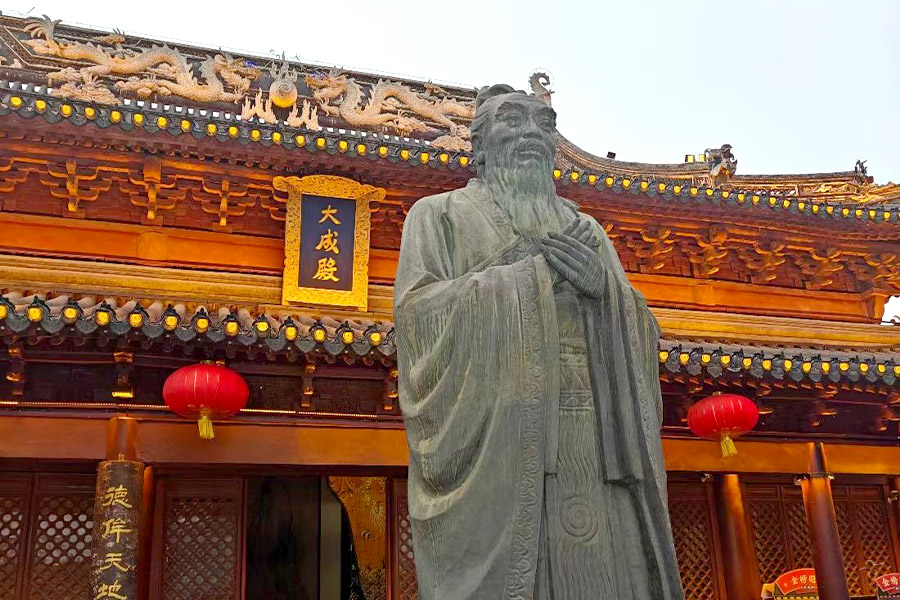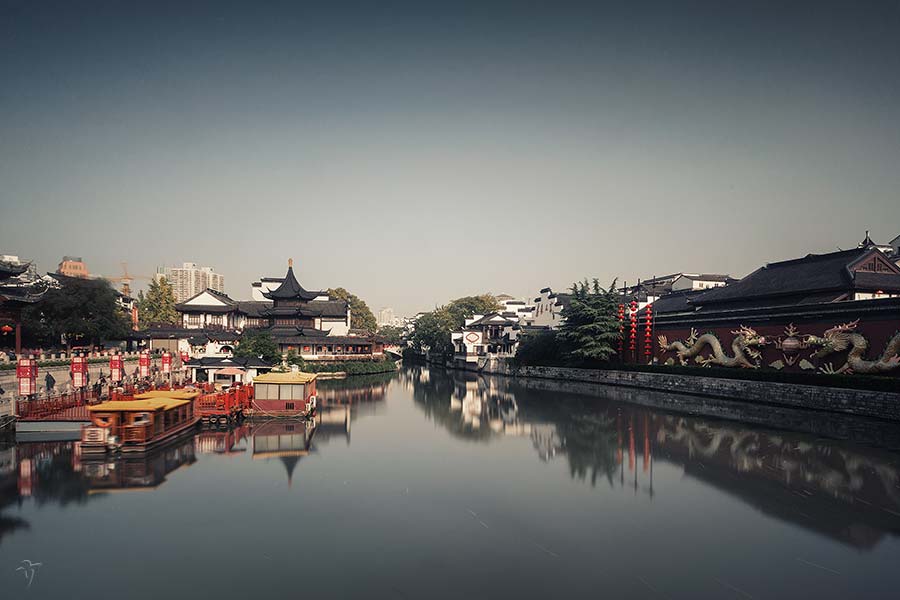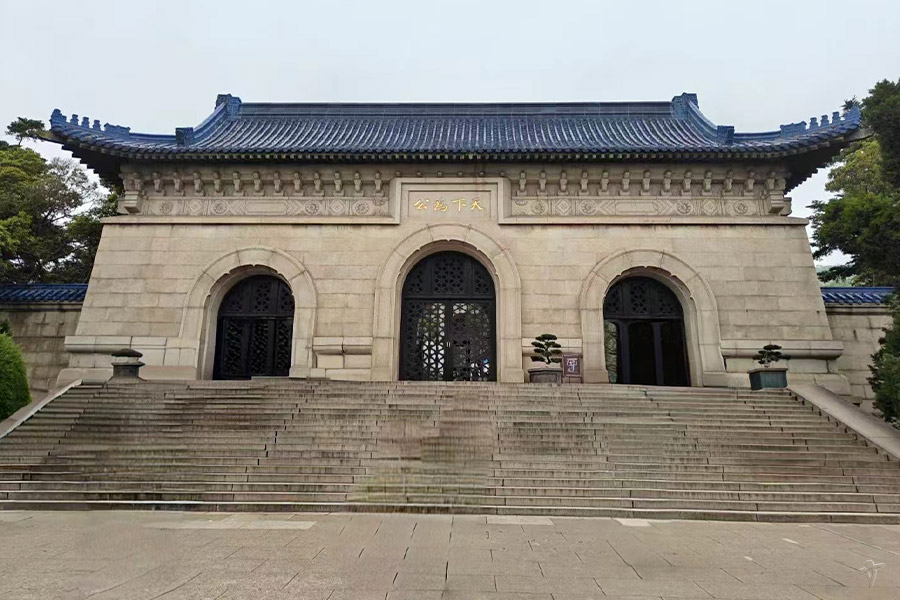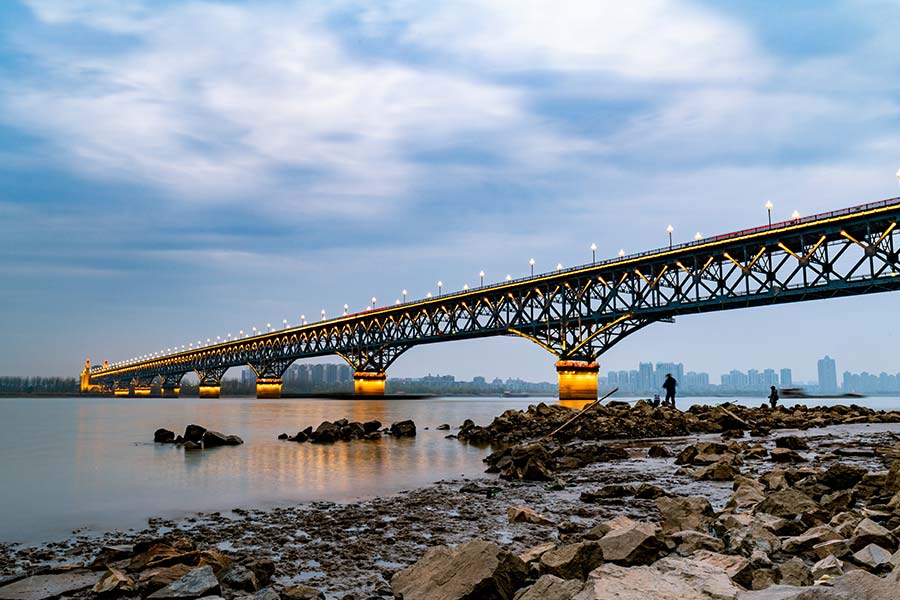Nanjing

Nanjing in brief
Nanjing is the capital city of the Jiangsu Province, located in Eastern China, about 300 kilometers away from Shanghai. As one of the most famous China's Four Great Ancient Capitals (Beijing, Xi'an, Luoyang, Nanjing), the city enjoys a tremendous fame in Mainland China as well as in many foreign countries. Also holding the names of "Nanking" or "Nan-ching", this historical city situated in the lower stretches of the famous Yangtze River Delta mingles old and new buildings at the same time. Nanjing has a jurisdictional and economic autonomy which puts itself in a higher level compared to other provincial cities. The government of Nanjing has its direct jurisdiction over 11 districts and 2 counties, and represents one of the most important city in the whole country. Mainly composed of Han nationality citizens, Nanjing is also home to 50 other ethnic nationalities among which the Hui, the Manchu and the Zhuang are the most important ones. Geographically speaking, the city of Nanjing lies in the largest economic zone of China (Yangtze River Delta) and enjoys a monsoon humid subtropical climate. More than one of China greatest ancient capital, Nanjing is also appreciated by travelers for its rich natural resources making the development of the city and of its tourism in a larger extent, more and more important with years. As a pivotal transportation hub of Eastern China with subway, bus, harbor, air, railway, Nanjing doesn't have to be jealous of other cities. Travelers to China having the opportunity to stop by or even board at Nanjing on a Yangtze River Cruise will stay gaping by the extent of this Chinese city.
History of Nanjing – A Great Ancient Capital of China having played a tremendous role in the early 20th century

According to historians, Nanjing is renowned as one of the oldest cities established in South China. Being the capital of six dynasties in Chinese history and the capital of the Republic of China (China National Government established by Kuomindang Party led by Chiang Kai-shek) from 1912 to 1949, Nanjing is the perfect example of an historical city where major historical events were mainstays for the foundation of a country. Everything started in 495 BC when forts called "Yecheng" (冶城) and "Yuecheng" (越城) were respectively built at the outskirts of the present city, by the States of Wu and Yue, forming nowadays the Zhonghua Gate. With years of conquests, destructions and rebuilding the different States completed the actual Nanjing, called during the Qin and Han Dynasties, "Moling" (秣陵). It was already in 229 BE that Nanjing became a capital city for the first time under the Kingdom of Wu. History and major events during the rule of the East Wu made it already become a major commercial, political and cultural center of China. Called "Jiankang" (建康) after the Jin court flight, Nanjing kept on being the capital of southern China for more than two and a half centuries, then enjoyed tremendous proofs of this rich past in its buildings constructions and relics. Namely, the Imperial Tombs located in the Qixia District of Nanjing are the best examples reminding this ancient past. Reconstructed during the Tang Dynasty, then known as Jinling (金陵), the city followed on with its building as an important Chinese city. Becoming the capital of China again from 1368 to 1421, Nanjing developed and saw its city walls extended for being the longest surviving one in the world today, and the city in itself was known as the largest in the world at that period of time. Let by itself for more than two centuries after the removal of the capital to the northern Beijing, Nanjing became one more time the capital city of China in 1644 after the dark events occurring in Beijing at that period of time. Devastated after Prince Dodo's invasion, Nanjing capital was renamed as Jiangning (江宁) from 1644 to 1911. Invaded by British during the First Opium War, then renamed again and again... Nanjing was finally selected as the capital of The Republic of China after the Xinhai Revolution led by Dr. Sun Yat-Sen. Invaded by Japanese during the Second Sino-Japanese War and place of dramatic events for the native population following this event, history finally changed the city's destiny another time. Indeed, this is since 1949 that the Government of the People's Republic of China installed in Beijing after the flight of the National Government of China to Chongqing. As everyone would understand now, this is impossible to miss the opportunity to stop off at one of the biggest and greatest Ancient Capital city of China that is Nanjing. This grandiose past has left lots of interesting historical sites and relics that everyone should just see.
Nanjing nowadays – Modern city center, historical sites and Yangtze River tourist activities

Today, Nanjing represents one of China's most pleasant and prosperous cities, mingling modern city center with great historical sites and natural sceneries on the borders of the Yangtze River. Ranked to one of China's four major scientific research and educational cities, Nanjing is also a pivotal cultural city home to some of the finest and oldest museums of the country. Located 300 kilometers (200 miles) away from Shanghai, Nanjing enjoys nowadays an important role as an industrial, scientific, commercial, financial and international city in mainland China. Situated in the Yangtze River Delta, the port of Nanjing is a reason to the city's huge expansion even teasing the first ranked harbor of Shanghai. This cosmopolitan combination of old and new explains the city's attraction to many domestic and international tourists. Nanjing is rich in natural sceneries and historical sites. While coming to this city, travelers should take their time to enjoy the numerous historical sites flourishing there such as the Mausoleum of Dr. Sun Yat-Sen, the Imperial Xiaoling Mausoleum of Ming Dynasty, the colorful Confucius Temple, the Nanjing Museum or simply the city's night life. Crossing from east to west by the famous Yangtze River, Nanjing is the perfect harbor where to take on board for a marvelous Yangtze River Cruise! Living at the river's path for a while is such a moving experience to learn another surprising side of China. Visiting the city from May to November would be the best time for tourists here whether by foot, boat, road or air. Nanjing Ancient Great Capital of China opens its doors, just enjoy the visit!
Quick Questions
Our team is waiting for your questions. Please feel free to ask us any questions you might have about our China package tours, Chinese culture, or the sites available. We will gladly help you with any special needs you might have and all questions, like our trip designing is completely free of charge.





